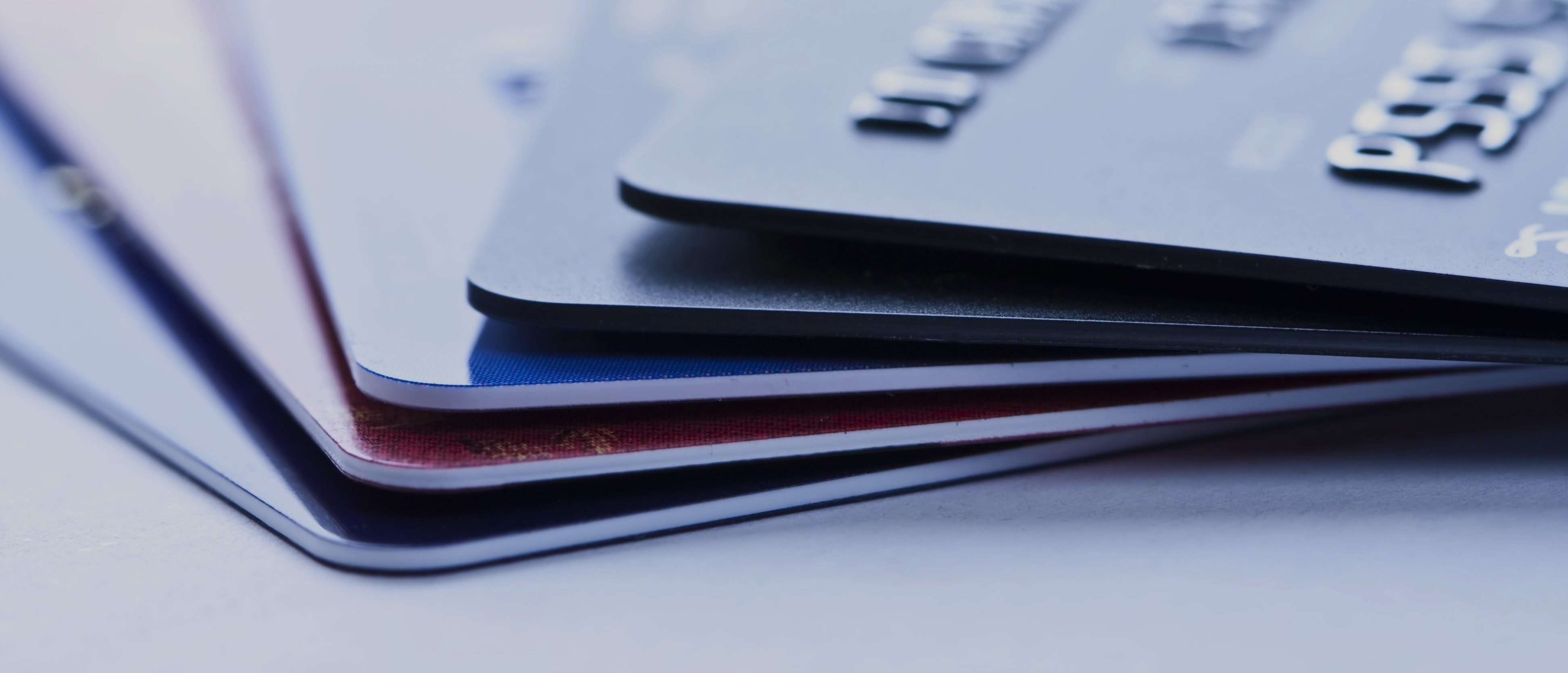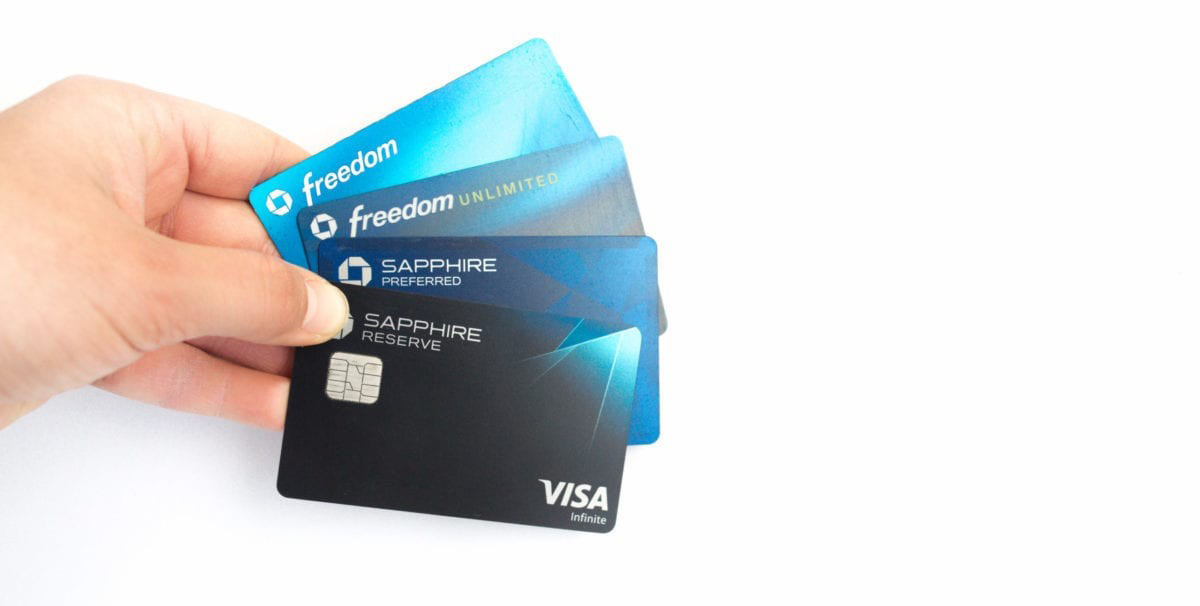

Finance
How To Increase Chase Credit Card Limit
Modified: March 3, 2024
Looking to increase your Chase credit card limit? Discover essential tips and strategies in our comprehensive finance guide to maximize your credit potential.
(Many of the links in this article redirect to a specific reviewed product. Your purchase of these products through affiliate links helps to generate commission for LiveWell, at no extra cost. Learn more)
Table of Contents
- Introduction
- Factors Affecting Chase Credit Card Limit
- Steps to Increase Your Chase Credit Card Limit
- Utilize Your Card Responsibly
- Make Regular Payments
- Pay Off Outstanding Balances
- Request a Credit Line Increase Online
- Speak with a Chase Representative
- Monitor Your Credit Score
- Consider a Balance Transfer
- Apply for a New Credit Card
- Utilize Authorized User Accounts
- Conclusion
Introduction
Having a higher credit card limit can provide you with greater financial freedom and flexibility. It allows you to make larger purchases, handle unexpected expenses, and potentially improve your credit score. If you’re a Chase credit cardholder, you may be wondering how to increase your credit card limit. Fortunately, there are several factors and strategies that can help you achieve this goal.
Chase is renowned for its wide range of credit card options, including rewards cards, cashback cards, and travel cards. Each card comes with its own credit limit, which represents the maximum amount you can borrow from the issuer. While your initial credit limit is typically determined by various factors such as your credit history, income, and creditworthiness, it’s not set in stone. With responsible credit card usage and a proactive approach, you can gradually increase your Chase credit card limit over time.
In this article, we will explore the key factors that affect your credit card limit and provide practical steps you can take to increase your Chase credit card limit. By following these strategies, you can improve your financial flexibility and maximize your credit potential.
Factors Affecting Chase Credit Card Limit
Before diving into the strategies to increase your Chase credit card limit, it’s important to understand the factors that can influence the issuer’s decision. While each credit card company has its own specific criteria, Chase takes into account several key factors when determining your credit card limit.
1. Credit History: Your credit history plays a significant role in determining your credit card limit. A strong credit history, characterized by a history of on-time payments, low credit utilization, and a variety of credit accounts, can increase your chances of securing a higher credit limit.
2. Income: Your income level is another crucial factor that Chase considers when setting your credit limit. Higher income levels show a greater ability to repay debts, which can lead to a higher credit card limit.
3. Credit Score: Your credit score is a numerical representation of your creditworthiness. Chase, like other credit card issuers, relies on credit scores to assess your risk as a borrower. Generally, a higher credit score indicates a lower risk, which can lead to a higher credit card limit.
4. Payment History: Your history of making timely payments, not only with Chase but with other creditors as well, is an important consideration. Consistently paying your bills on time demonstrates responsible financial behavior and can positively impact your creditworthiness.
5. Credit Utilization: Credit utilization refers to the percentage of your available credit that you are currently using. Keeping your credit utilization low, ideally below 30%, demonstrates responsible credit management and can work in your favor when requesting a credit limit increase.
6. Account Age: The length of time you’ve held a credit card account with Chase or any other issuer also plays a role. Generally, longer account history demonstrates stability and responsible credit usage, which can lead to a higher credit card limit.
While these factors are not exhaustive, they are among the most influential when it comes to determining your credit card limit with Chase. Understanding these factors can help you strategize and take steps to improve your creditworthiness, thus increasing your chances of a higher credit card limit.
Steps to Increase Your Chase Credit Card Limit
Now that you have a clear understanding of the factors that affect your Chase credit card limit, let’s explore the practical steps you can take to increase it. By following these strategies, you can work towards a higher credit card limit and enjoy greater financial flexibility.
- Utilize Your Card Responsibly: One of the best ways to increase your credit card limit is to demonstrate responsible credit card usage. Make regular purchases on your Chase card and pay off the balances in full and on time each month. This shows Chase that you are a reliable borrower and can handle a higher credit limit.
- Make Regular Payments: Consistently making on-time payments not only reinforces your creditworthiness but can also positively impact your credit score. Set up automatic payments or reminders to ensure you never miss a payment.
- Pay Off Outstanding Balances: If you have any outstanding balances on your Chase credit card, prioritize paying them off. Lowering your overall debt can improve your credit utilization ratio and increase your chances of a credit limit increase.
- Request a Credit Line Increase Online: Chase provides an online option for requesting a credit line increase. Check if you are eligible for an increase through your online account and submit your request. Keep in mind that approval is not guaranteed, and Chase may request additional information to assess your eligibility.
- Speak with a Chase Representative: If you prefer a more personal approach, you can also call the customer service helpline and speak with a Chase representative. They can guide you through the process of requesting a credit line increase and provide you with valuable insights.
- Monitor Your Credit Score: Regularly monitor your credit score and track your progress. As your credit score improves, your chances of a credit limit increase also increase. Utilize free credit monitoring services or consider obtaining your credit report to stay informed.
- Consider a Balance Transfer: If you have outstanding balances on other high-interest credit cards, consider transferring those balances to your Chase credit card. Not only can this potentially lower your interest rates, but it can also showcase responsible credit usage to Chase, increasing your credit limit eligibility.
- Apply for a New Credit Card: If you have a good credit history, you might consider applying for a new Chase credit card. Having multiple credit cards with responsible usage can boost your creditworthiness and potentially lead to higher credit limits across your cards.
- Utilize Authorized User Accounts: If a family member or close friend has a Chase credit card with a high credit limit, you may want to ask them to add you as an authorized user on their account. Responsible usage on their card can indirectly reflect positively on your creditworthiness and increase your chances of a higher credit limit.
Remember, increasing your Chase credit card limit is not an overnight process. It requires consistent and responsible credit card usage, alongside maintaining a positive credit history. By taking these steps, you can work towards a higher credit limit, giving yourself greater financial flexibility and opportunities.
Utilize Your Card Responsibly
One of the most effective strategies for increasing your Chase credit card limit is to demonstrate responsible credit card usage. Using your card regularly and responsibly sends a positive signal to Chase that you are a reliable borrower and can handle a higher credit limit. Here are some tips to help you utilize your card responsibly:
- Make Regular Purchases: Use your Chase credit card for everyday expenses and make regular purchases. This shows that you have a need for a higher credit limit and are actively using your card.
- Pay Balances in Full: Aim to pay off the balances on your credit card in full and on time every month. This not only helps you avoid interest charges but also shows responsible financial management to the credit card issuer.
- Avoid Maxing Out Your Card: Try to keep your credit utilization ratio below 30%. Maxing out your card by reaching your credit limit can signal financial strain to lenders, potentially negatively impacting your chances of a credit limit increase.
- Stay Within Your Means: Only spend what you can afford to pay off each month. Keeping your balances manageable shows responsible financial behavior and increases your creditworthiness.
- Monitor Your Spending: Keep an eye on your spending to ensure you are not exceeding your budget or making unnecessary purchases. Responsible spending habits demonstrate financial discipline.
- Avoid Cash Advances: While cash advances may seem convenient, they typically come with high fees and interest rates. It’s best to avoid cash advances as they can negatively impact your credit card usage and repayment history.
By utilizing your Chase credit card responsibly, you show the issuer that you are a reliable borrower who can handle a higher credit limit. This demonstrates your financial discipline and responsible credit card management, which can increase your chances of a credit limit increase over time.
Make Regular Payments
Making regular and timely payments on your Chase credit card is crucial for increasing your credit card limit. Consistently paying your bills on time not only demonstrates responsible financial behavior, but it also helps improve your creditworthiness and shows lenders that you are a reliable borrower. Here are some tips to ensure you make regular payments:
- Set Up Automatic Payments: Consider setting up automatic payments for your Chase credit card. This ensures that your minimum payment or full payment is automatically deducted from your bank account on the due date, reducing the risk of missing a payment.
- Create Payment Reminders: If you prefer to manually make payments, create reminders on your phone or calendar to notify you of upcoming due dates. This way, you can stay on top of your payment schedule and avoid any late fees or penalties.
- Pay More Than the Minimum: While it’s important to make at least the minimum payment on your Chase credit card, try to pay more than the minimum whenever possible. This helps reduce your outstanding balance faster and demonstrates your ability to manage larger amounts of credit.
- Consider Bi-Weekly Payments: Instead of making one monthly payment, consider splitting your payment in half and paying bi-weekly. This can help you stay ahead of your payment schedule and reduce your outstanding balance more effectively.
- Pay Before the Due Date: Aim to make your credit card payments a few days before the due date. This ensures that your payment is processed on time and allows for any potential delays in processing.
By consistently making regular payments on your Chase credit card, you demonstrate responsible credit card usage and financial management. This helps build a positive payment history and increases your chances of a credit limit increase over time. Remember, making regular payments is not only important for increasing your credit card limit but also for maintaining a healthy credit score and financial well-being.
Pay Off Outstanding Balances
If you have any outstanding balances on your Chase credit card, it’s essential to prioritize paying them off to increase your credit card limit. Paying off your balances not only helps improve your credit utilization ratio but also demonstrates responsible financial management. Here are some strategies to pay off outstanding balances effectively:
- Create a Repayment Plan: Assess your outstanding balances and create a repayment plan to systematically pay them off. Prioritize high-interest debts first and allocate extra funds towards paying off your credit card balances.
- Budget and Allocate Funds: Review your monthly expenses and see where you can make adjustments to allocate more funds towards paying off your credit card balances. Cut back on unnecessary expenses or find ways to increase your income to accelerate your debt repayment.
- Consider Debt Snowball or Avalanche Method: If you have multiple outstanding balances, you can choose to use either the debt snowball or debt avalanche method. The debt snowball method involves paying off the smallest balances first, while the debt avalanche method focuses on paying off the highest interest rate debts first.
- Negotiate Lower Interest Rates: Reach out to Chase and inquire about the possibility of negotiating lower interest rates on your outstanding balances. Lowering your interest rates helps reduce the total amount you owe and allows you to pay off the debt more quickly.
- Focus on One Debt at a Time: While it’s important to make minimum payments on all your debts, focus on aggressively paying off one credit card balance at a time. This helps you stay motivated and see progress, which can encourage you to continue paying off your debts.
By actively paying off your outstanding balances, you reduce your credit utilization ratio and demonstrate responsible financial behavior to Chase. This, in turn, can increase your creditworthiness and improve your chances of a higher credit card limit. Remember, paying off your balances requires discipline and commitment, but the long-term benefits make it a worthwhile endeavor.
Request a Credit Line Increase Online
If you are looking to increase your Chase credit card limit, you have the option to request a credit line increase online. Chase provides a convenient online platform for customers to submit their requests. Here’s how you can go about requesting a credit line increase:
- Check your Eligibility: Log in to your Chase online account and navigate to the credit card section. Look for any available options or notifications regarding credit limit increases. Chase may provide information on your eligibility or offer a pre-qualified credit line increase.
- Review Your Account: Before requesting a credit line increase, review your account history, payment behavior, and creditworthiness. Ensure that you have been consistently making on-time payments and maintaining responsible credit card usage.
- Submit the Request: Once you have determined your eligibility and reviewed your account, proceed to submit the credit line increase request through the online platform. Follow the instructions provided by Chase, which may include providing additional information on your income, employment, or financial situation.
- Wait for Confirmation: After submitting your request, you will need to wait for Chase to review and process it. The approval timeframe and process may vary, but Chase will typically communicate the decision to you through the online platform, email, or postal mail.
- Provide Additional Information if Requested: In some cases, Chase may request additional documentation or information to assess your creditworthiness and make a decision. Be prepared to provide any additional requested documents promptly to expedite the process.
- Respect the Decision: If your credit line increase request is approved, Chase will notify you of the updated credit card limit. However, if your request is denied, respect the decision and take it as an opportunity to reassess your financial habits and creditworthiness.
Requesting a credit line increase online is a convenient and straightforward process. However, it’s important to note that approval is not guaranteed, and each request is evaluated based on various factors, including your credit history, payment behavior, and income. It’s essential to have a solid financial foundation and demonstrate responsible credit card usage before making a credit line increase request.
Remember to carefully consider your credit needs before requesting a credit line increase. Only request an increase that aligns with your ability to manage and repay the higher credit limit responsibly. An increased credit card limit can provide greater financial flexibility, but it should be used wisely and within your means.
Speak with a Chase Representative
If you prefer a more personalized approach or have specific questions regarding a credit line increase, speaking with a Chase representative can provide you with valuable insights and guidance. Here’s how you can connect with a Chase representative to discuss your credit card limit:
- Identify the Contact Information: Look for the customer service contact information provided by Chase. It can usually be found on their website, credit card statements, or the back of your Chase credit card.
- Call the Customer Service Helpline: Dial the customer service helpline as provided by Chase. Follow the prompts to speak with a representative or navigate to the appropriate department for credit card inquiries. Be prepared to provide your personal information and account details for verification purposes.
- Ask About Credit Line Increase: Once connected with a Chase representative, express your interest in increasing your credit card limit. Inquire about the process, eligibility criteria, and any specific steps you need to take. The representative will provide guidance and may ask additional questions to assess your request.
- Discuss Your Financial Situation: During the conversation, be prepared to discuss your financial situation, including your income, employment status, and any other relevant information that demonstrates your ability to handle a higher credit limit. This helps the representative assess your creditworthiness.
- Seek Clarification on Policies: If you have any concerns or questions about credit limit increase policies or how they may impact your creditworthiness or credit card usage, don’t hesitate to seek clarification from the representative. They can provide insights and address any doubts or uncertainties you may have.
- Consider Other Opportunities: While speaking with a representative, they may highlight other credit card options or promotional offers available to you. Take the opportunity to ask about any new credit card options that may provide higher credit limits or more favorable terms.
Speaking with a Chase representative can give you a better understanding of the credit line increase process, eligibility criteria, and potential opportunities. They can provide personalized advice based on your specific financial situation and help you make informed decisions regarding your credit card limit.
Remember to be polite and patient during the conversation. Building a positive rapport with the representative can potentially lead to valuable insights and assistance throughout the credit line increase process.
Monitor Your Credit Score
Monitoring your credit score is an important step in managing your financial well-being and increasing your Chase credit card limit. Your credit score is a numerical representation of your creditworthiness and plays a significant role in the lender’s decision-making process. Here’s why monitoring your credit score is crucial:
- Track Your Progress: Monitoring your credit score allows you to track your progress and see how your creditworthiness evolves over time. You can observe improvements resulting from responsible credit card usage and timely payments.
- Identify Areas for Improvement: By reviewing your credit score regularly, you can identify areas for improvement in your credit profile. This may include reducing credit card balances, addressing any delinquent accounts, or disputing any inaccuracies on your credit report.
- Address Credit Issues Early: Monitoring your credit score enables you to identify any negative changes promptly. If you notice a significant drop in your credit score, it could indicate potential issues that need to be addressed, such as missed payments or identity theft.
- Understand the Impact of Actions: Your credit score provides insights into how your financial actions, such as applying for new credit or increasing your credit card limit, can impact your creditworthiness. Monitoring your score helps you make informed decisions to maximize your credit potential.
- Take Advantage of Score Monitoring Services: Many credit card issuers, including Chase, offer free credit score monitoring services to their customers. Take advantage of these services to access your credit score regularly and stay informed about any changes.
- Review your Credit Report: In addition to monitoring your credit score, review your credit report from time to time. This allows you to ensure its accuracy, address any errors or fraudulent activity, and have a comprehensive understanding of your credit history.
By monitoring your credit score, you can proactively manage your creditworthiness and improve your chances of a higher credit card limit. Use the insights gained from monitoring to make informed financial decisions and maintain responsible credit card usage.
Remember that building and maintaining good credit takes time and consistent effort. By monitoring your credit score, you can stay on top of your credit health and take the necessary steps to improve it, ultimately increasing your chances of a credit line increase with Chase.
Consider a Balance Transfer
If you have outstanding balances on high-interest credit cards, consider utilizing a balance transfer as a strategy to increase your Chase credit card limit. A balance transfer involves moving your existing credit card debt to a new credit card with a lower interest rate, allowing you to save money on interest and potentially increase your credit limit. Here’s what you need to know about balance transfers:
- Research Balance Transfer Offers: Start by researching balance transfer offers available from Chase and other credit card issuers. Look for cards that offer an introductory 0% APR on balance transfers for a specific period. This allows you to pay off your debt without accruing additional interest.
- Consider Fees and Terms: Take into account any balance transfer fees that may be associated with the new credit card. While many cards offer promotional balance transfer rates, they often charge a fee, typically a percentage of the transferred amount. Ensure that the savings from the lower interest rate outweigh the transfer fee.
- Calculate the Potential Savings: Use an online balance transfer calculator to determine the potential savings that can be achieved by transferring your balances. Compare the interest you would pay on your current credit card to the interest you would pay with the new balance transfer card during the promotional period.
- Apply for a Chase Balance Transfer Card: If you decide to pursue a balance transfer with Chase, apply for a Chase credit card that offers favorable balance transfer terms. Be sure to read the terms and conditions carefully, including the duration of the introductory 0% APR period and any fees associated with the transfer.
- Transfer Your Balances: Once approved for the new Chase balance transfer credit card, initiate the transfer of your outstanding balances from your current high-interest credit cards to the new card. Follow the instructions provided by Chase to ensure a seamless transfer process.
- Focus on Paying Off the Balance: With your balances transferred, allocate funds towards paying off the debt during the promotional period. Make consistent payments and aim to pay off the entire transferred balance before the introductory period ends to take full advantage of the savings.
By considering a balance transfer, you can consolidate your debt onto a single credit card with a lower interest rate, potentially saving money on interest payments. This can improve your credit utilization ratio and demonstrate responsible credit management to Chase, increasing your chances of a credit limit increase.
It’s important to note that balance transfers should be used as a tool to pay off debt and improve your creditworthiness. Avoid accumulating new debt on the transferred card and maintain responsible credit card usage to fully benefit from the balance transfer strategy.
Apply for a New Credit Card
If you’re looking to increase your Chase credit card limit, applying for a new credit card can be a viable strategy. Adding a new credit card to your wallet can provide additional credit capacity and potentially increase your overall credit limit. Here’s what you should consider when applying for a new credit card:
- Research Different Credit Card Options: Take the time to research and compare various credit card options available in the market. Look for cards that align with your financial goals and offer higher credit limits.
- Check Your Creditworthiness: Before applying for a new credit card, assess your creditworthiness. Review your credit score, credit history, and make sure you meet the issuer’s requirements. A strong credit profile increases your chances of approval and may lead to a higher credit limit.
- Consider Chase Credit Card Options: As a Chase customer, exploring the credit card options available within the Chase family can be advantageous. Chase offers a range of credit cards with varying features, rewards, and credit limits. Look for cards that complement your spending habits and align with your financial goals.
- Apply for a Card with a Higher Credit Limit: Focus on applying for a credit card that offers a higher credit limit than your current Chase card. Opting for a card with a higher limit increases your overall credit capacity and potential borrowing power.
- Manage Multiple Credit Cards Responsibly: If approved for a new credit card, ensure you manage it responsibly. Make regular payments, maintain a low credit utilization ratio, and avoid accumulating unnecessary debt. Responsible credit card usage across multiple accounts can strengthen your creditworthiness and increase your chances of credit limit increases in the future.
- Consider a Balance Transfer or Consolidation: If approved for a new credit card with a higher credit limit, you may consider transferring balances from your other cards to consolidate your debt. This can help you manage your debt more efficiently and potentially increase your credit limit on the new card.
Applying for a new credit card can expand your available credit and potentially lead to a higher credit limit. However, it’s crucial to approach this strategy responsibly and be mindful of managing multiple credit cards effectively. Use the additional credit wisely and avoid overspending or accumulating unnecessary debt.
Remember to research and compare different credit card options, considering the features, rewards, and credit limits they offer. By choosing a credit card with a higher limit and managing it responsibly, you can work towards increasing your overall credit limit and improve your financial flexibility.
Utilize Authorized User Accounts
Another strategy to increase your Chase credit card limit is to leverage authorized user accounts. By being added as an authorized user on someone else’s Chase credit card with a higher credit limit, you can indirectly benefit from their credit history and potentially boost your creditworthiness. Here’s how you can utilize authorized user accounts:
- Choose a Trusted Individual: Approach a family member or close friend who has a Chase credit card with a high credit limit and a solid credit history. It’s crucial to select someone you trust and have a strong relationship with to ensure responsible usage.
- Request to Be Added as an Authorized User: Speak with the credit card owner and ask if they are willing to add you as an authorized user on their account. If they agree, they will contact Chase to request adding your name to the credit card account.
- Establish Boundaries and Communication: Discuss and establish clear boundaries and expectations with the credit card owner. Decide on how the card will be used, the maximum spending limit, and how expenses will be managed and paid off. Open and regular communication is key to maintaining a healthy relationship and responsible credit card usage.
- Monitor Card Activity: Keep track of the authorized user account’s transactions and balances. Regularly review the statements and ensure that charges made on the card are within the agreed-upon limits and align with your budget and financial goals.
- Benefit from Credit History: As an authorized user, you can benefit from the credit history associated with the account. If the primary cardholder has a strong credit history with on-time payments and low credit utilization, it can positively impact your creditworthiness.
- Build Your Credit Profile: As you utilize the authorized user account responsibly, it can help build or improve your own credit profile. This may increase your chances of a higher credit limit on your Chase credit card or improve your creditworthiness for future credit applications.
- Practice Responsible Credit Card Usage: Utilize the authorized user account responsibly by making timely payments and keeping the credit utilization low. Responsible credit card usage demonstrates your ability to handle a higher credit limit and positively impacts your creditworthiness.
- Communicate Changes or Concerns: Stay in regular contact with the primary cardholder and notify them of any changes in your financial situation or concerns regarding the authorized user account. Keeping open lines of communication helps maintain transparency and ensures a healthy credit card arrangement.
By being added as an authorized user on someone else’s Chase credit card with a higher credit limit, you can indirectly benefit from their credit history and potentially increase your creditworthiness. However, it’s crucial to approach authorized user accounts responsibly, maintain open communication, and practice responsible credit card usage.
Remember that the primary cardholder retains control over the authorized user account, so it’s important to establish clear boundaries and expectations to ensure a mutually beneficial arrangement. Over time, as your credit profile strengthens, you increase your chances of a higher credit limit on your own Chase credit card and greater financial flexibility.
Conclusion
Increasing your Chase credit card limit is a goal that requires a proactive approach and responsible credit card usage. By understanding the factors that affect your credit card limit and implementing strategic steps, you can work towards achieving a higher credit limit and enjoying greater financial flexibility.
Factors such as your credit history, income, credit score, payment history, credit utilization, and account age all play a role in determining your credit card limit. By managing these factors responsibly, you can improve your creditworthiness and increase your chances of a credit limit increase.
Practical steps to increase your Chase credit card limit include utilizing your card responsibly by making regular purchases, paying off outstanding balances, and making regular payments. Requesting a credit line increase online or speaking with a Chase representative can also provide valuable insights and guidance in the process.
Monitoring your credit score, considering a balance transfer, applying for a new credit card with a higher credit limit, and utilizing authorized user accounts are additional strategies to increase your credit card limit. Each approach should be approached with responsibility and aligned with your financial goals and capabilities.
Remember that increasing your credit card limit is not an instant process. It takes time, consistency, and responsible credit card management. As you gradually improve your creditworthiness, your chances of a higher credit limit with Chase increase.
Ultimately, increasing your Chase credit card limit can provide you with more financial freedom, greater borrowing power, and the potential for improved credit scores. By implementing these strategies and maintaining responsible credit card habits, you can work towards achieving a higher credit limit and enjoying the benefits it brings.














